It’s too far into Sunday to do Six on Saturday, but that’s not going to stop me. And all the photos here were taken yesterday, on Saturday. I was just too beat by coming-inside time to do anything with them.
First a little catch up, then a grass-heavy set of pics.
One of my pumpkin plants was suddenly very dead. I identified squash vine borer damage. I pulled out the entire section of stem and set it on fire. I thought maybe I could do this without burning the whole burn-pile, but all the holly trimmings made that impossible. Well, the upside is I was able to clean up the tall weeds around the burn pile afterward, and that corner of the place now looks a lot more tidy.
I finally got a handful of ripe blueberries that Lurkey can’t reach, my blackberry patch is looking weirdly scraggly and sad, I harvested two more cucumbers, and noticed that some tomatoes have started to form. 99% certain Lurkey is going to steal all the tomatoes he can reach, as well.
1. Under-tree clean up
The growth habit of Juniperus virginiana (Eastern red cedar) is so annoying. The branches bend downward like they are inviting the poison ivy, smilax (greenbriar), wild grape, Ailanthus altissima runners, and honeysuckle to climb on up. And if you try to go underneath to clean stuff up, you are likely to get poked in the eye by myriad bare sticks pointing downward from all the branches. I got super frustrated with this yesterday, and pruned off all the lower branches I could reach and get my loppers around. Then I cut and/or pulled out all the Ailanthus altissima runners I saw that were not completely surrounded by poison ivy. And I directly applied glyphosate to said poison ivy so I can come back later and get those runners. Pretty sure I will be breaking out in urushiol rash within a few days, despite scrubbing myself off multiple times with a rag and Joy dish soap twice during the process.
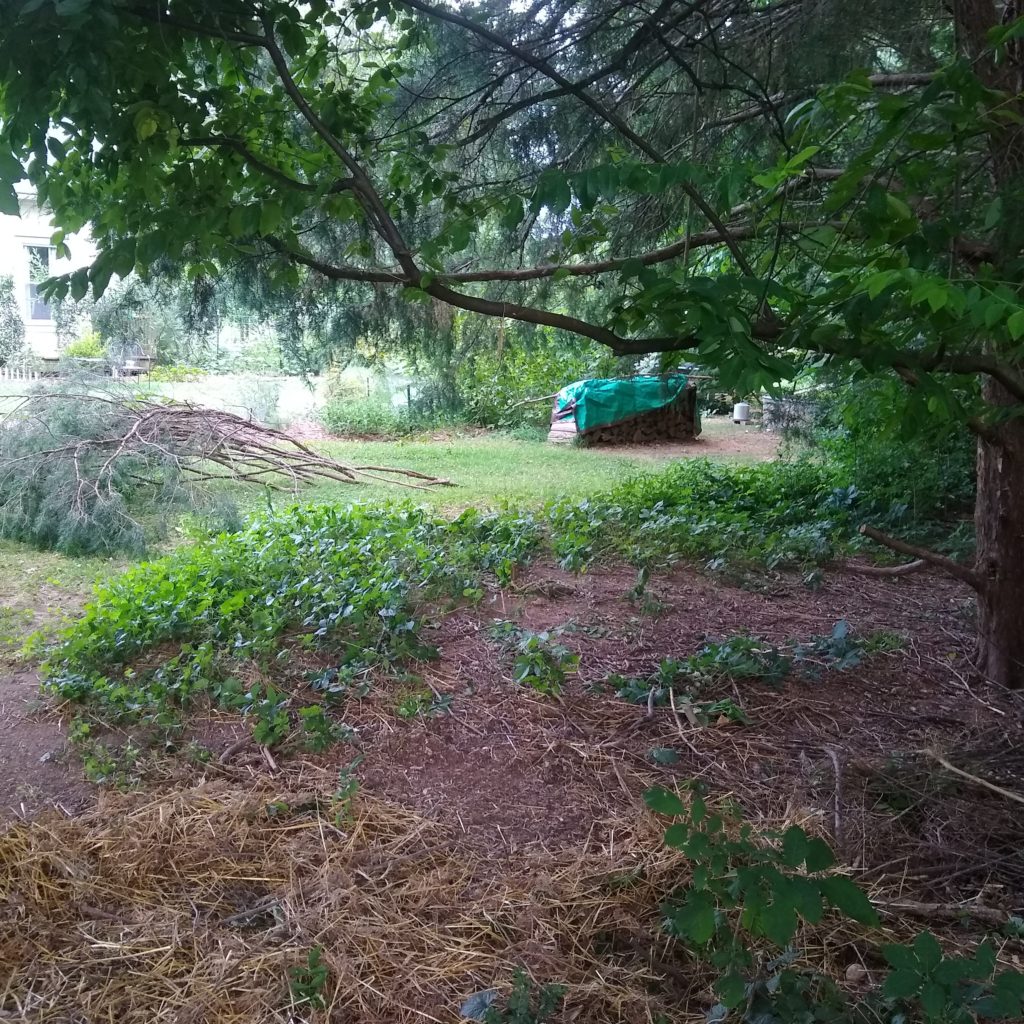
2. Emerson wearing Elderflowers
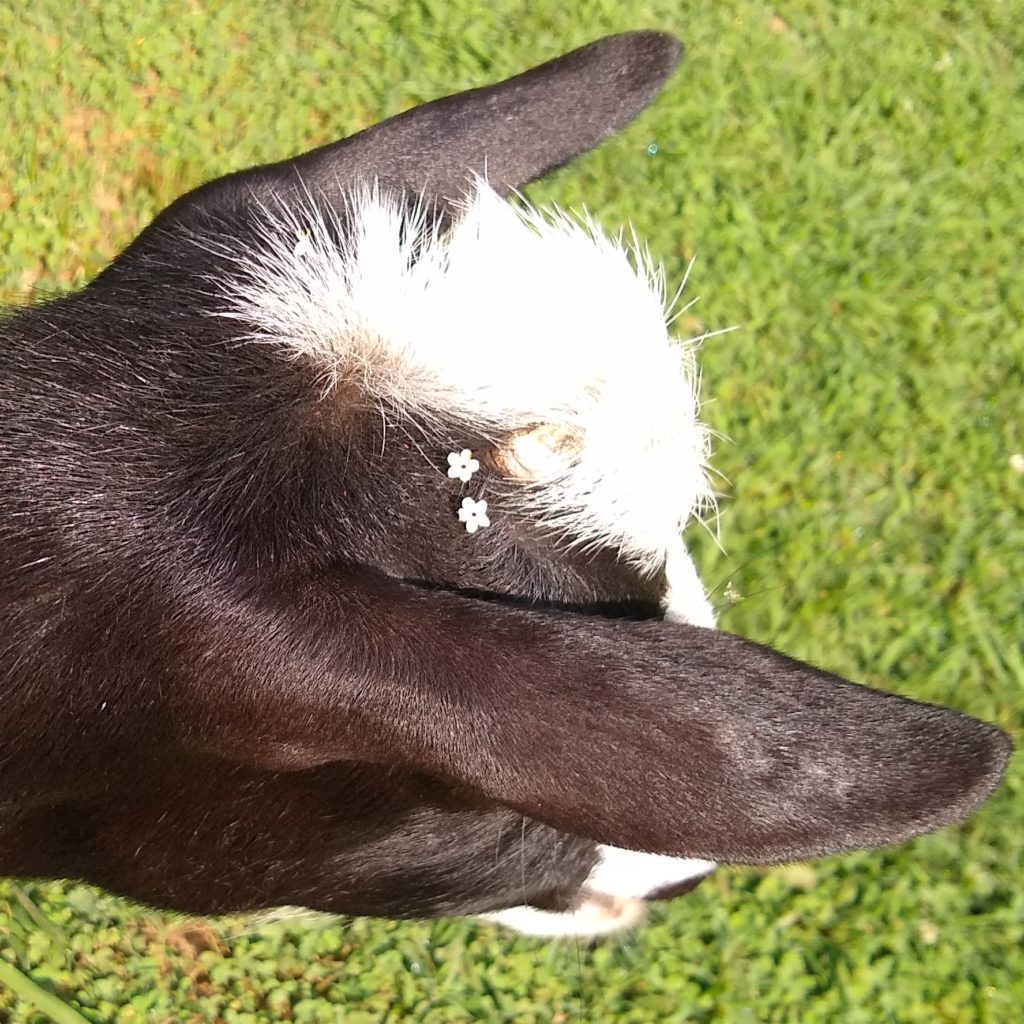
3. Cinnamon Chicken in the Heimia salicifolia patch
I expected these shrubs (started from seed in spring 2019) to grow faster this year. They’ve really only started taking off in the last couple of weeks, and I need to do some trimming to encourage branching out. Last year’s seed starting theme was “Meeting new-to-me medicine plants,” and the Heimia salicifolia was part of that theme, along with Leonurus leonotis, Leonurus cardiaca, Prunella vulgaris, and Silene capensis. Missouri Botanical Garden on Heimia salicifolia:
Foliage of this shrub has been used medicinally and psychoactively dating back to the time of the Aztecs. Shamans continue to use this plant today. Leaves can be used dry or fresh for preparation of a tea (sinicuichi) which reportedly causes euphoric, time/place altered, muscle-relaxed and anti-inflammatory effects. Dried leaves are sometime smoked in cigarette form. Sinicuichi usage reportedly causes vision to become yellow tinted, hence the sometimes used common name of sun opener for this shrub. Notwithstanding some of the bizarre effects reportedly experienced by using sincuichi, this plant may be legally purchased, grown and used as an ornamental or otherwise in all 50 states.
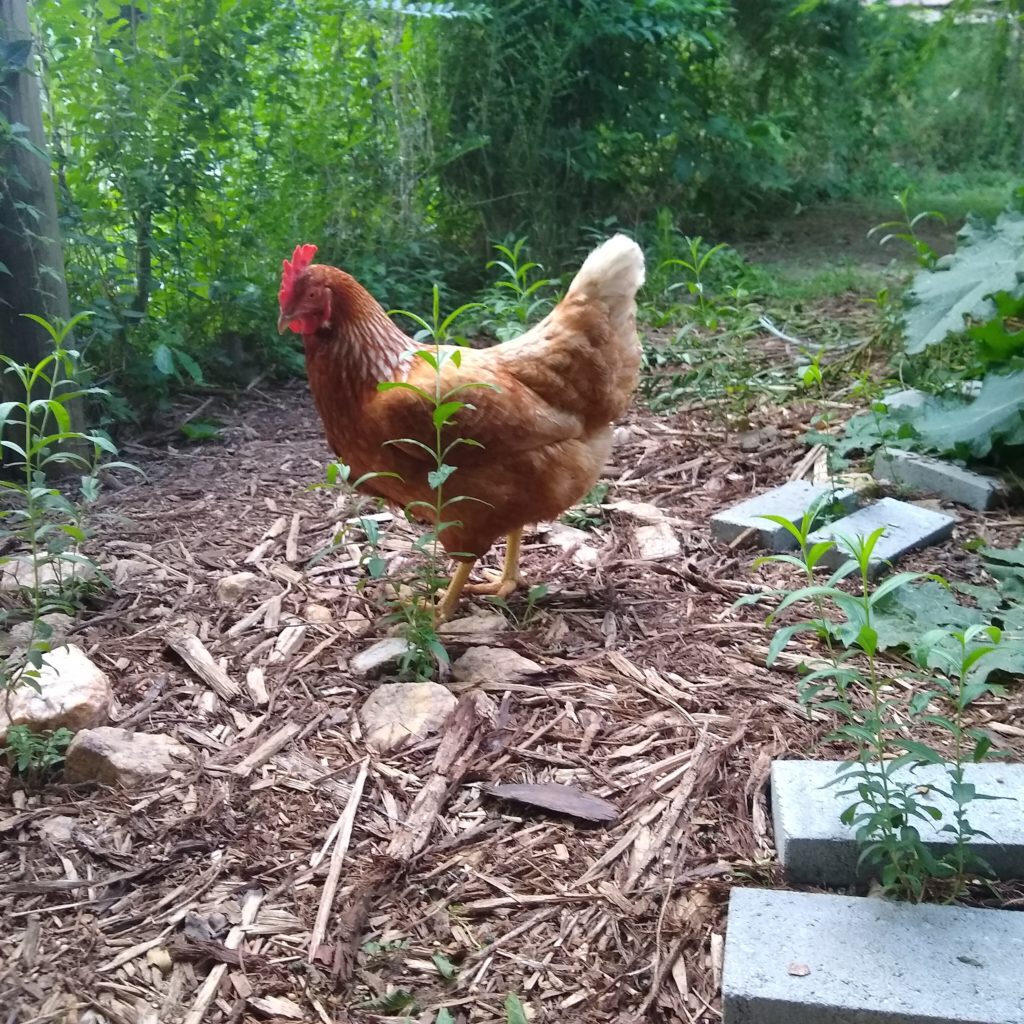
4. Elymus hystrix
The theme of this year’s seed starting was native plants, with a sub-theme of native grasses and sedges. Elymus hystrix was included in my NC Botanical Garden member seed packs, easily and quickly germinated, and looks happy around the back of the lily/peony bed. These were the last grass seeds received and the first to be planted out!
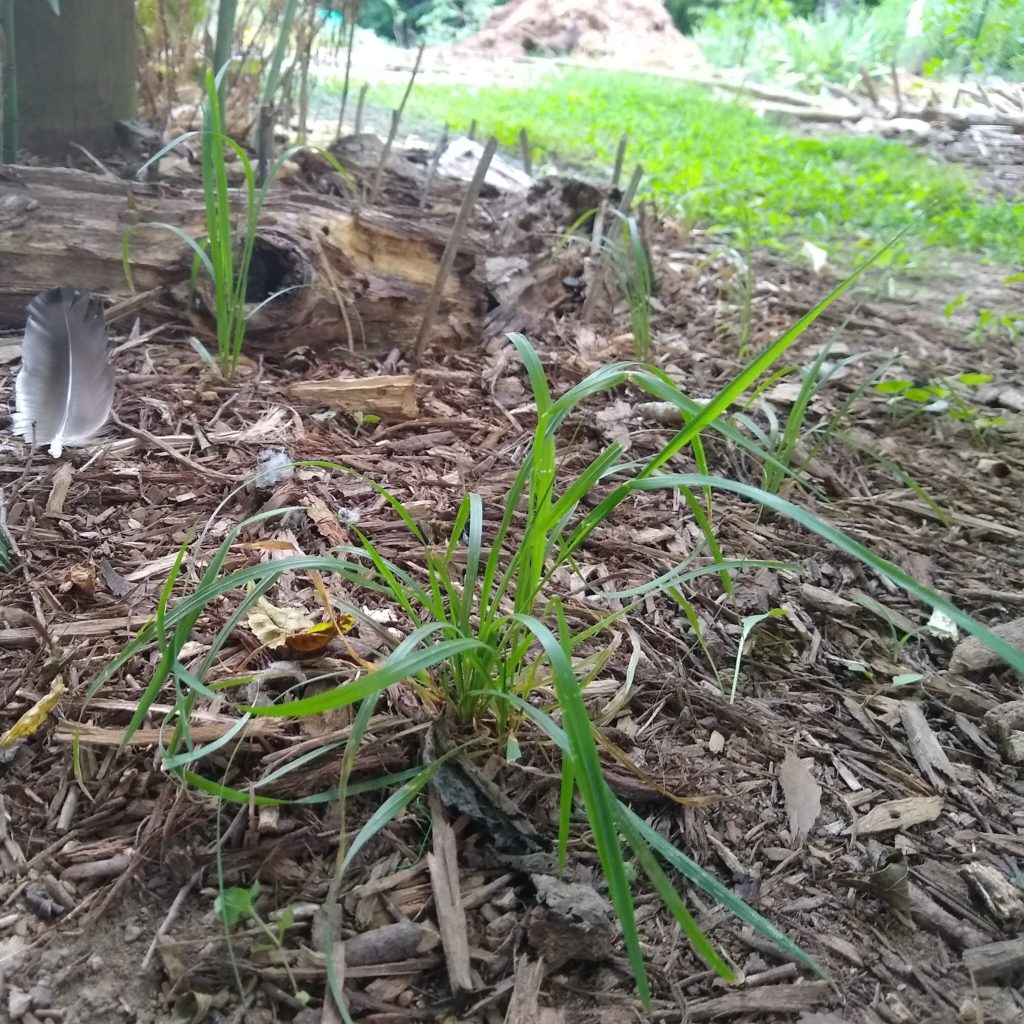
5. Sorghastrum nutans ‘Indian Steel’ and Panicum virgatum ‘Blue Giants’
Next I planted Sorghastrum nutans ‘Indian Steel’ (right) out around the bronze-foliage and yellow flower area next to the driveway. This grass will be blue-green until it turns yellow. It puts up tan-yellow flower panicles, which then turn bronze and persist into winter. I’m not sure about the timing of these colors in this area, but we will see.
Next in line was the Panicum virgatum ‘Blue Giants’, which should be very tall and silvery blue if all goes well. I had a very hard time deciding where to put these because of the size (and I gather it’s quite difficult to get rid of some of these grasses if you decide you don’t like the placement). I decided on two general areas: southeast corner of the house, and in a layer around the Guinea Fowl Spa.
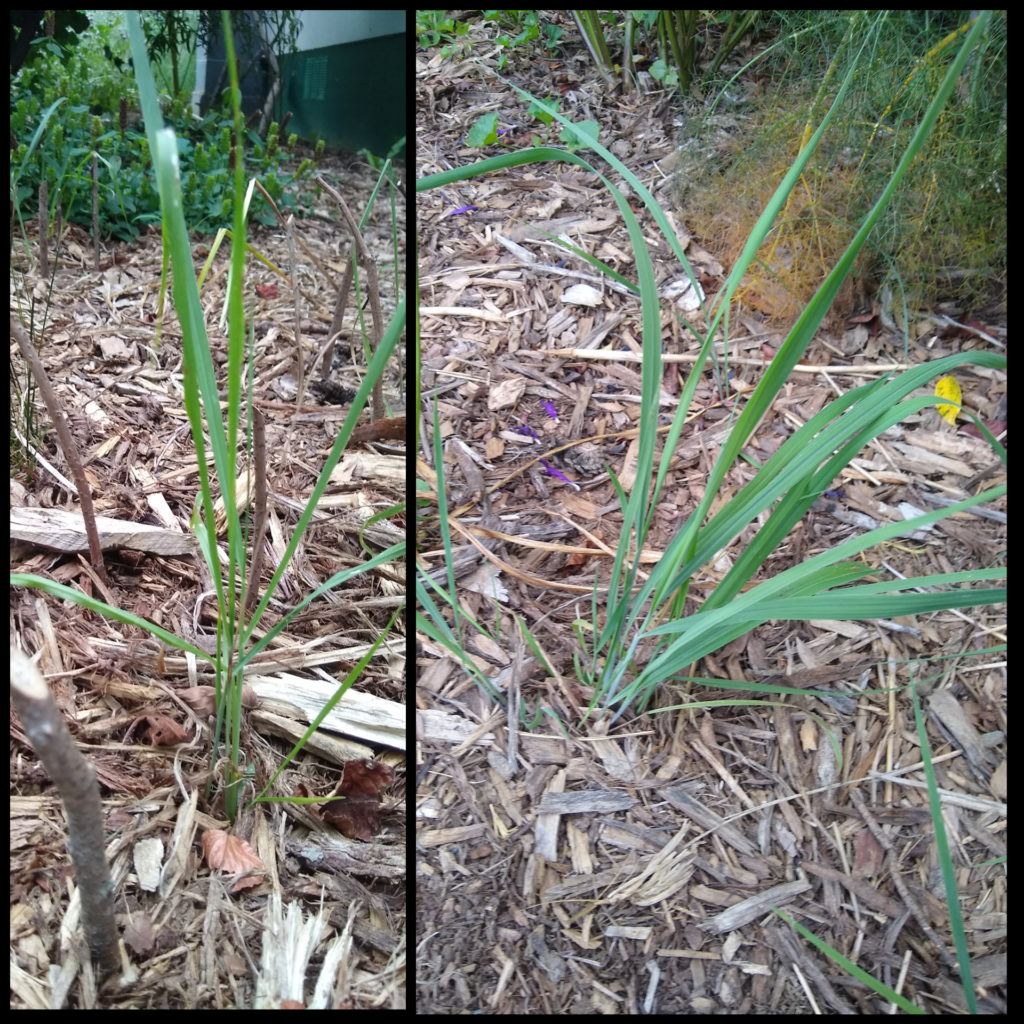
6. Eragrostis elliotti
Last-planted, as a multi-day row of storms was thundering up on me. I think some of it got drowned, but what remains is starting to stand up strong and look happy.
The two sedges I started from seed are still in their winter-sowing containers. More keep popping up in there, and now we’re in a brutally hot time for planting, so hopefully they’ll be ok hanging out until a bit later.
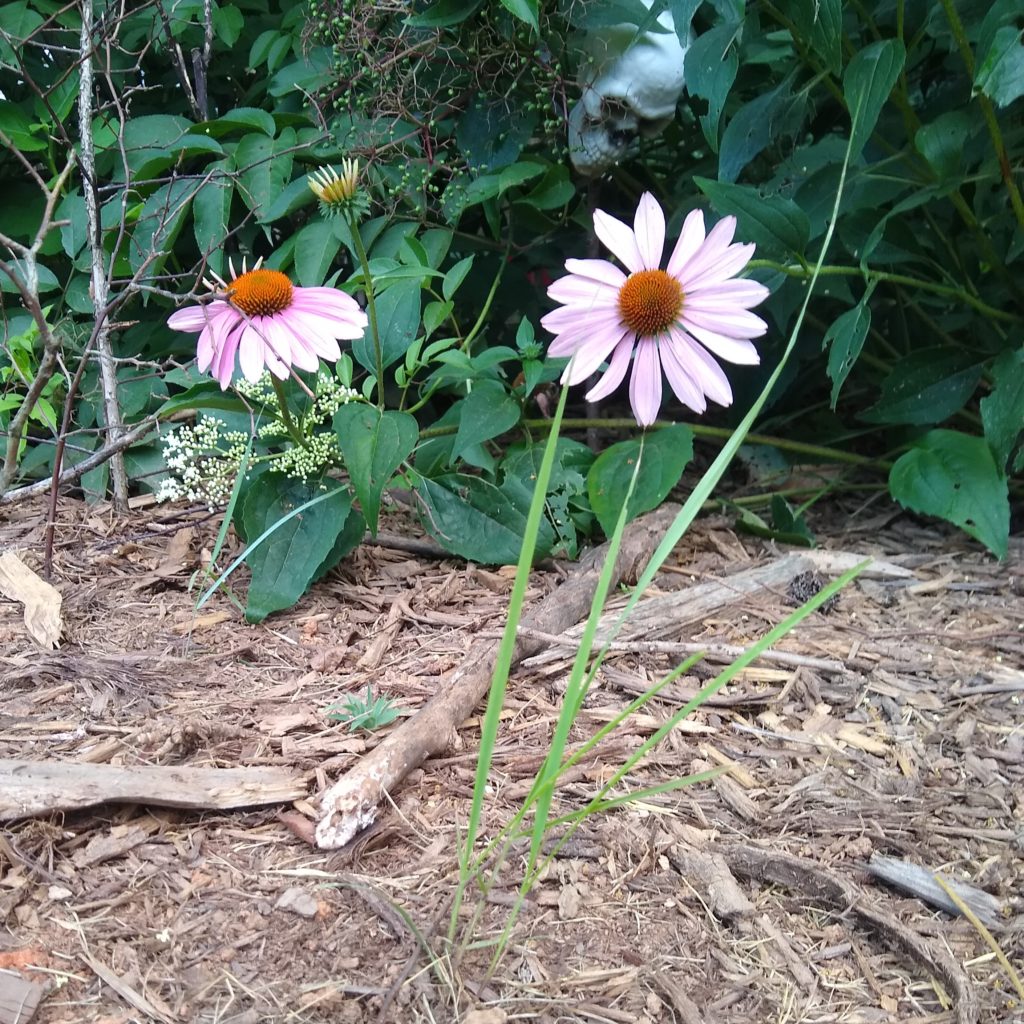
Six on Saturday is hosted by The Propagator, and you can see all the other, less tardy, participants for this week here.
Watching these as they unfold and develop. I’m keen on the lower-growing native grasses.